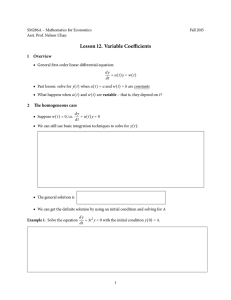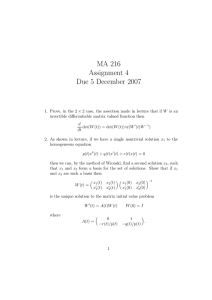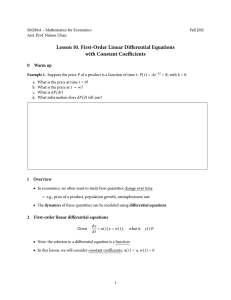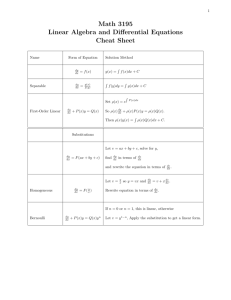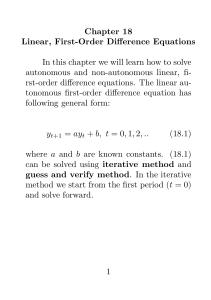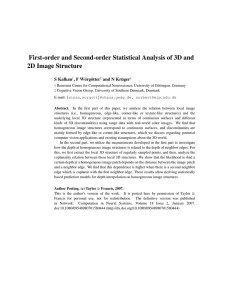( ) ∫ ( )
advertisement
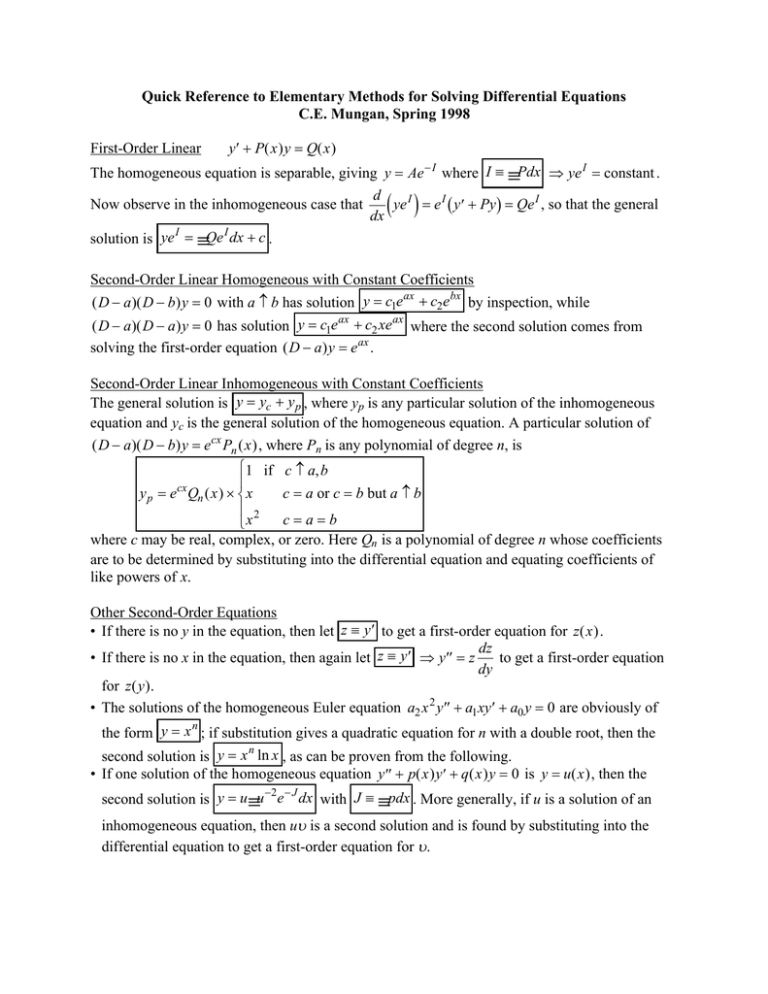
Quick Reference to Elementary Methods for Solving Differential Equations C.E. Mungan, Spring 1998 First-Order Linear y ′ + P(x)y = Q(x) The homogeneous equation is separable, giving y = Ae − I where I ≡ ∫ Pdx ⇒ ye I = constant . d Now observe in the inhomogeneous case that ye I = e I ( y ′ + Py) = Qe I , so that the general dx I I solution is ye = ∫ Qe dx + c . ( ) Second-Order Linear Homogeneous with Constant Coefficients ax bx (D − a)(D − b)y = 0 with a ≠ b has solution y = c1e + c2e by inspection, while ax ax (D − a)(D − a)y = 0 has solution y = c1e + c2 xe where the second solution comes from solving the first-order equation (D − a)y = e ax . Second-Order Linear Inhomogeneous with Constant Coefficients The general solution is y = yc + y p , where yp is any particular solution of the inhomogeneous equation and yc is the general solution of the homogeneous equation. A particular solution of (D − a)(D − b)y = ecx Pn (x), where Pn is any polynomial of degree n, is 1 if c ≠ a,b c = a or c = b but a ≠ b y p = e Qn (x) × x 2 c=a=b x where c may be real, complex, or zero. Here Qn is a polynomial of degree n whose coefficients are to be determined by substituting into the differential equation and equating coefficients of like powers of x. cx Other Second-Order Equations • If there is no y in the equation, then let z ≡ y ′ to get a first-order equation for z(x). dz • If there is no x in the equation, then again let z ≡ y ′ ⇒ y ′′ = z to get a first-order equation dy for z(y). • The solutions of the homogeneous Euler equation a2 x 2 y ′′ + a1 xy ′ + a0 y = 0 are obviously of n the form y = x ; if substitution gives a quadratic equation for n with a double root, then the n second solution is y = x ln x , as can be proven from the following. • If one solution of the homogeneous equation y ′′ + p(x) y ′ + q(x)y = 0 is y = u(x), then the −2 − J second solution is y = u ∫ u e dx with J ≡ ∫ pdx . More generally, if u is a solution of an inhomogeneous equation, then uυ is a second solution and is found by substituting into the differential equation to get a first-order equation for υ.
